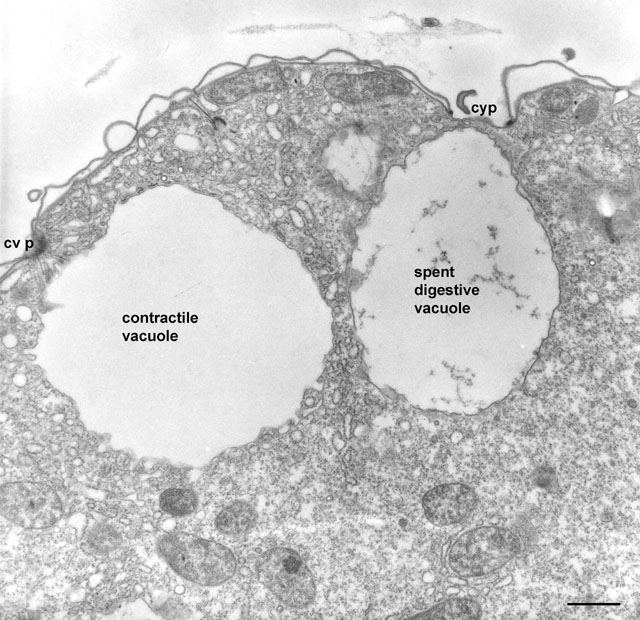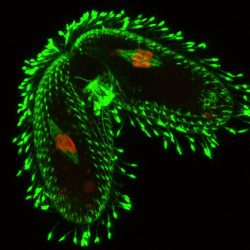The Contractile Vacuole System (CVS) is an osmoregulatory organelle comprised of large vesicles connected to the cytoplasm via membrane tubules (spongiome) to absorb excess water in the cell to be expelled from an opening in the plasma membrane. This is done to prevent excess water in the cell from causing catastrophic swelling or cell rupture.
Articles:
Cheng, C. Y., Romero, D. P., Zoltner, M., Yao, M. C., & Turkewitz, A. P. (2023). Structure and dynamics of the contractile vacuole complex in Tetrahymena thermophila. Journal of Cell Science, 136(22).
Heidi K. Grønlien, Christian Stock, Marilynn S. Aihara, Richard D. Allen, Yutaka Naitoh; Relationship between the membrane potential of the contractile vacuole complex and its osmoregulatory activity in Paramecium multimicronucleatum. J Exp Biol 15 October 2002; 205 (20): 3261–3270.
Plattner, H. (2013). Contractile vacuole complex—its expanding protein inventory. International Review of Cell and Molecular Biology, 306, 371-416.
Media:
Contractile Vacuole System
Image depicts the Contractile Vacuole System and a spent food vacuole approaching the cytoproct within a Tetrahymena cell. Credited to Professor Richard Allen and his Image Collection, permission to use image collection granted by Hawaii University.
Genes, Proteins, and Mutations:

